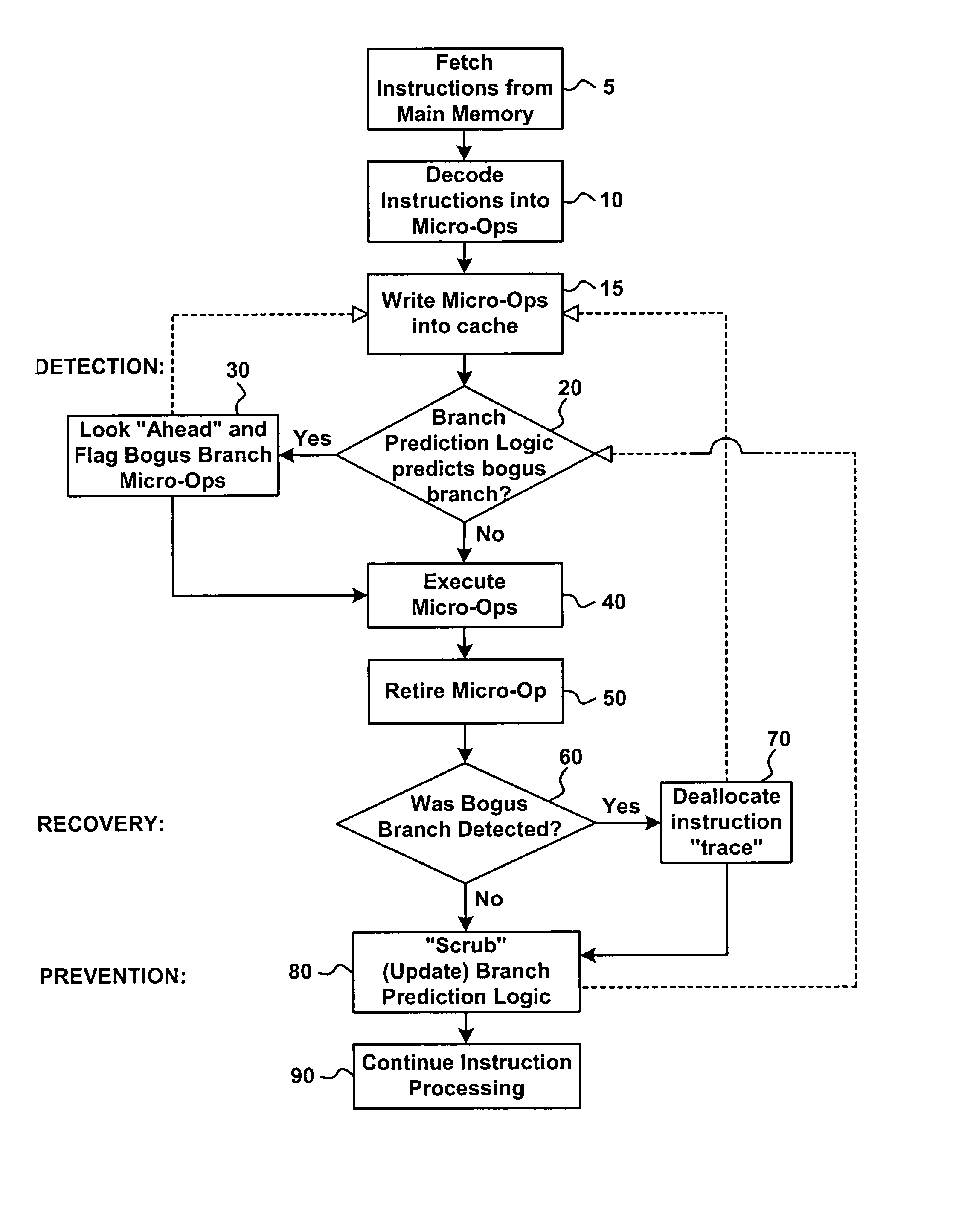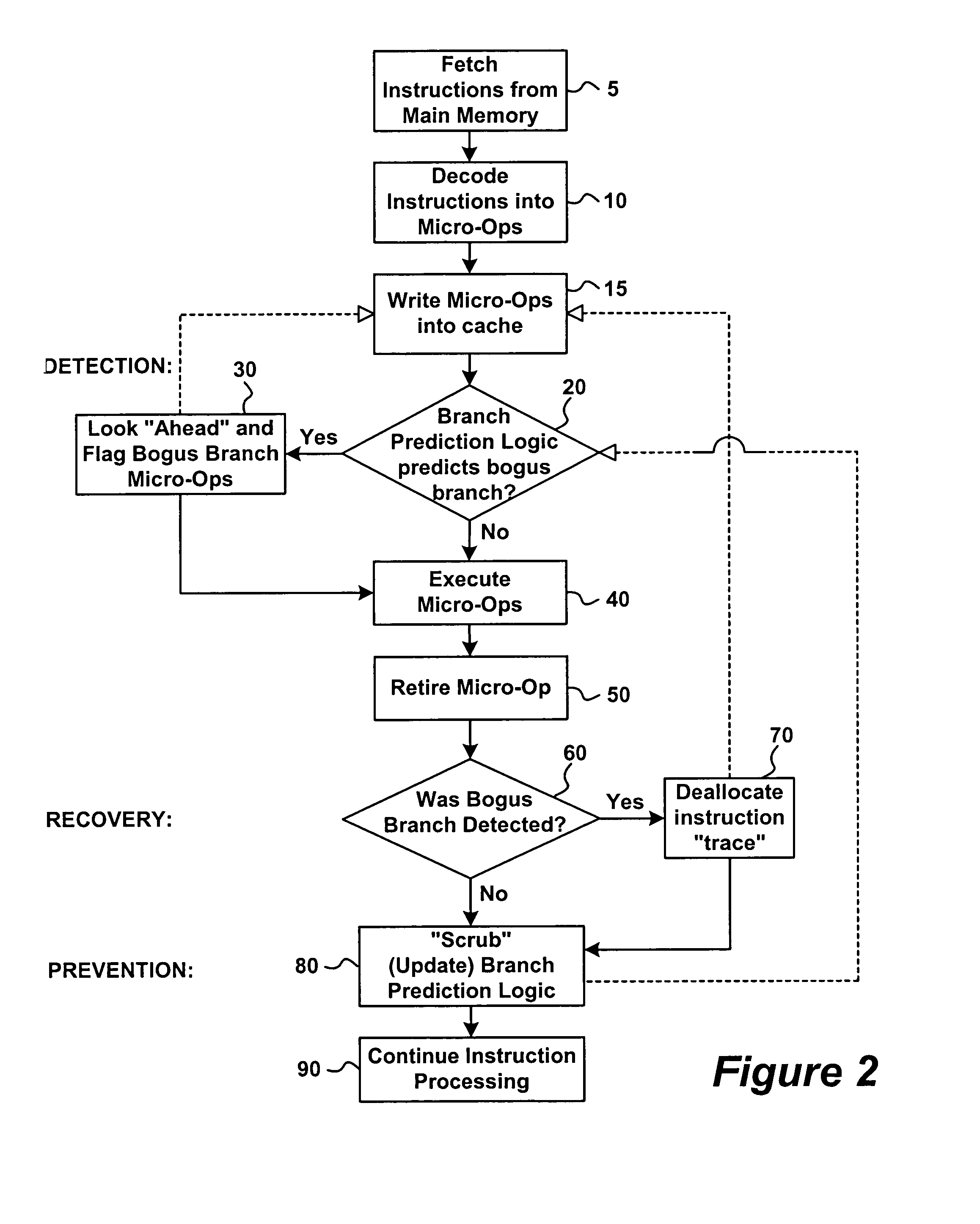Detection, recovery and prevention of bogus branches
a technology of bogus branches and instruction pipelines, applied in the direction of instruments, computations using denominational number representations, program control, etc., can solve problems such as catastrophic microprocessor failures
- Summary
- Abstract
- Description
- Claims
- Application Information
AI Technical Summary
Problems solved by technology
Method used
Image
Examples
Embodiment Construction
[0010]Referring to FIGS. 1 through 3, the present invention relates to a method and apparatus for the detection and prevention of and recovery from bogus branches in an instruction pipeline.
[0011]In a proposed new architecture, the instruction pipeline includes branch prediction logic for predicting whether or not micro-op branches will be taken when the micro-op instruction is eventually executed. More particularly, the ID translates each program instruction (i.e., macro-instruction) into one or more micro-ops. A decoded micro-op cache (DMC) receives the series of micro-ops and stores the macro instructions in the form of the micro-ops in cache memory. The DMC stores the micro-ops of the decoded instructions in the order the BTB predicts they should be executed. The EX obtains instructions either “streamed” from the DMC (if a particular instruction trace is currently stored in cache, i.e., a cache hit) or from the IFU through the ID (i.e., in the event of a cache miss) in which cas...
PUM
 Login to View More
Login to View More Abstract
Description
Claims
Application Information
 Login to View More
Login to View More - R&D
- Intellectual Property
- Life Sciences
- Materials
- Tech Scout
- Unparalleled Data Quality
- Higher Quality Content
- 60% Fewer Hallucinations
Browse by: Latest US Patents, China's latest patents, Technical Efficacy Thesaurus, Application Domain, Technology Topic, Popular Technical Reports.
© 2025 PatSnap. All rights reserved.Legal|Privacy policy|Modern Slavery Act Transparency Statement|Sitemap|About US| Contact US: help@patsnap.com



